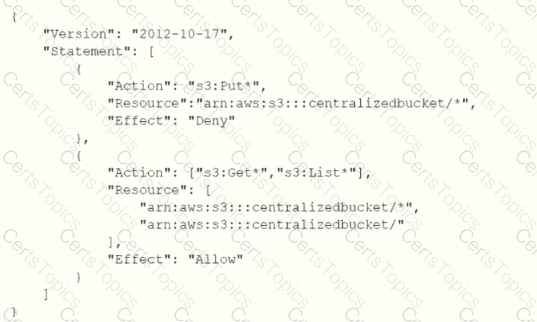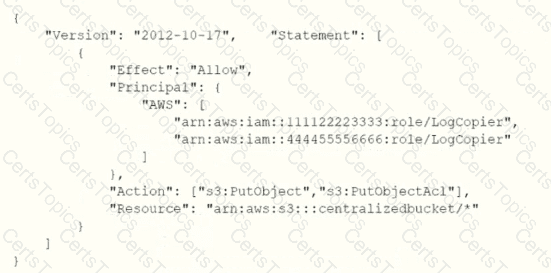The correct answer is B and D. In the dedicated security account, create an Amazon S3 bucket. Configure S3 Object Lock in compliance mode and a retention period of 2 years on the S3 bucket. Set the bucket policy to allow the organization’s member accounts to write to the S3 bucket. Create an AWS CloudTrail trail for the organization. Configure logs to be delivered to the logging Amazon S3 bucket in the dedicated security account.
According to the AWS documentation, AWS CloudTrail is a service that enables governance, compliance, operational auditing, and risk auditing of your AWS account. With CloudTrail, you can log, continuously monitor, and retain account activity related to actions across your AWS infrastructure. CloudTrail provides event history of your AWS account activity, including actions taken through the AWS Management Console, AWS SDKs, command line tools, and other AWS services.
To use CloudTrail with multiple AWS accounts and regions, you need to enable AWS Organizations with all features enabled. This allows you to centrally manage your accounts and apply policies across your organization. You can also use CloudTrail as a service principal for AWS Organizations, which lets you create an organization trail that applies to all accounts in your organization. An organization trail logs events for all AWS Regions and delivers the log files to an S3 bucket that you specify.
To create an organization trail, you need to use an administrator account, such as the organization’s management account or a delegated administrator account. You can then configure the trail to deliver logs to an S3 bucket in the dedicated security account. Thiswill ensure that all account activity across all member accounts and regions is logged and reported to the security account.
According to the AWS documentation, Amazon S3 is an object storage service that offers scalability, data availability, security, and performance. You can use S3 to store and retrieve any amount of data from anywhere on the web. You can also use S3 features such as lifecycle management, encryption, versioning, and replication to optimize your storage.
To use S3 with CloudTrail logs, you need to create an S3 bucket in the dedicated security account that will store the logs from the organization trail. You can then configure S3 Object Lock on the bucket to prevent objects from being deleted or overwritten for a fixed amount of time or indefinitely. You can also enable compliance mode on the bucket, which prevents any user, including the root user in your account, from deleting or modifying a locked object until it reaches its retention date.
To set a retention period of 2 years on the S3 bucket, you need to create a default retention configuration for the bucket that specifies a retention mode (either governance or compliance) and a retention period (either a number of days or a date). You can then set the bucket policy to allow the organization’s member accounts to write to the S3 bucket. This will ensure that all logs are retained in a secure storage location within the security account for 2 years and no changes or deletions are allowed.
Option A is incorrect because setting the bucket policy to allow the organization’s management account to write to the S3 bucket is not sufficient, as it will not grant access to the other member accounts in the organization.
Option C is incorrect because using an S3 Lifecycle configuration that expires objects after 2 years is not secure, as it will allow users to delete or modify objects before they expire.
Option E is incorrect because using Lambda and Kinesis Data Firehose to forward logs from one S3 bucket to another is not necessary, as CloudTrail can directly deliver logs to an S3 bucket in another account. It also introduces additional operational overhead and complexity.








